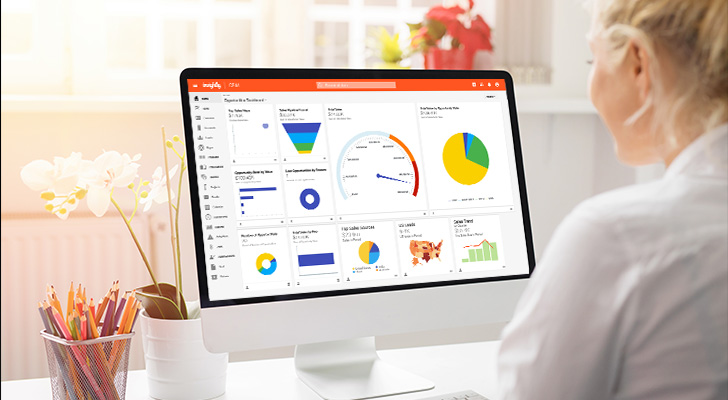Do you really need a CRM? It’s a fair question. After all, you’ve made it this far without one. Why go to the effort of implementing yet another system?
Over the past decade, I’ve worked with numerous clients across multiple industries and sectors. Although most clients use a CRM, I have encountered a few who do not. Drawing from first-hand experience, here are seven downsides of running a business without a CRM.

1. No source of truth
Spreadsheets, inboxes, documents, and your brain. These are just a few of the data silos that exist in your business.
Data silos have many negative consequences on your operational efficiency and are difficult to overcome—especially when you’re not using a CRM. After all, where do your people go when they need timely and accurate information? Their inboxes? Your shared network drive? Or, do they just call each other and ask for help? Without a single source of truth, your team spends more time looking for data than actually using it.
Data should propel your business forward—not create new obstacles to success. Without a central source of truth, the obstacles are plentiful.
2. You can’t see the “big picture”
Successful business leaders effectively use data to inform their decision-making. They also regularly set time aside to ensure data is timely, accurate, and, most importantly, useful. From pipeline value to customer retention to website engagement, data-driven metrics form the basis of modern management.
Of course, it’s hard to gain the necessary insights when data is spread all over the place. As a result, organizations that do not use CRM technology tend to rely purely on gut feelings as opposed to real-world performance metrics and forecasts.
In short, you can’t see the “big picture” when you don’t know where to look—or what to look for.

3. Relationships are harder to understand
Stop and think about your ten most important client relationships.
How did you acquire these customers? Were they the result of a successful advertising campaign, or did they all come from word-of-mouth referrals? Now multiply the same questions across your entire customer base. Sure, it may be possible that you have all the answers, but does the rest of your team?
CRMs are built to help you track, understand, and strengthen business relationships. Features like record linking and advanced reporting help you and your entire team know—with certainty—the original source and impact of each relationship.
Without a CRM, you’re forced to rely on anecdotes, which become less reliable as you scale your business.
4. Less control over your data
Let’s assume that you track all of your customer data in a shared spreadsheet. Although better than nothing, spreadsheets have several shortcomings that limit the control of your data, including your ability to:
Restrict access to data
You may be able to protect certain tabs of a spreadsheet, but within the tab itself there is less control. This becomes problematic when you need to restrict customer data from specific users. Case in point, your sales rep in the northwest district does not need to see the leads from the southeast district. Unfortunately, making this work in a spreadsheet is difficult—if not impossible.

Ensure data integrity
What happens when a user accidentally deletes a row in your spreadsheet? Days or weeks may pass before anyone even notices. Once the issue is identified, how will you know who made the oversight or how many other accidental changes were made? It’s impossible to ensure data integrity with spreadsheets.
Maintain data compliance
We live in a world increasingly concerned about data privacy and security. Ensuring total compliance with regulatory and industry-specific guidelines is complex enough even when you have the right tech stack. Spreadsheets and homegrown databases are not built for data compliance. It’s just that simple.
5. Productivity issues
Your team can’t be productive unless they have a clear understanding of what they’re supposed to do. When delegations are spread across multiple inboxes, chat threads, and team collaboration platforms, staff become overwhelmed and feel unable to focus and make progress.
Centralizing all of your work into a CRM that’s built for project management alleviates this confusion, resulting in elevated productivity and motivated team members. And, since your CRM houses all of your customer relationship data, tasks and projects can be easily linked to relevant records, providing an additional layer of transparency and accountability.
 6. Confusion about what’s actually going on
6. Confusion about what’s actually going on
Speaking of transparency, do you know what staff are working on each day? Are they focused on the priorities that deliver the greatest impact?
Without the right technology, it’s difficult to know for sure.
Integrating all of your project management data into a CRM provides much-needed clarity for your leadership team. Data-driven productivity reports provide instant visibility into who is getting the most work done. Notes, tasks, and linked emails deliver detailed insights into the life of each project. Kanban-style project boards offer an intuitive and visually appealing format for collecting ideas, sequencing work, and accomplishing more goals.
7. Bad data
The only thing worse than no data is bad data.
Bad data comes in many shapes and sizes and from many sources. That’s why fixing and preventing bad data is not easy—even with a well-structured CRM. Without a CRM, you lack a consistent format for collecting and organizing data, which makes your job even more challenging.
Harkening back to our spreadsheet example, let’s consider your organization’s process for tracking lost deals. When a deal is lost, sales reps simply key in a freeform explanation of what happened. Over the course of dozens or hundreds of deals, however, making sense of countless paragraphs of unstructured text becomes untenable. As a result, sales managers stop reading the summaries and, eventually, sales reps stop providing feedback altogether.
By contrast, a CRM can be configured to display an intuitive picklist when deals are marked as lost. With the click of a mouse, sales reps simply select the reason and get back to work. No more long-winded paragraphs. No more typos and missing details. Just the facts. This approach standardizes the data entry process, reduces the potential for bad data, and enhances your ability to run meaningful reports and course-correct.
 Time for a CRM?
Time for a CRM?
Implementing a CRM may seem like a relatively low priority given all of the other moving parts in your business. But, maintaining the status quo can have lasting negative effects on your organization and hold back growth.
Take time to assess your business needs, then seek out platforms that can easily adapt to your unique needs and help you reach business goals.
Get started with a free needs assessment and a product demo from Insightly.

 6. Confusion about what’s actually going on
6. Confusion about what’s actually going on Time for a CRM?
Time for a CRM?

